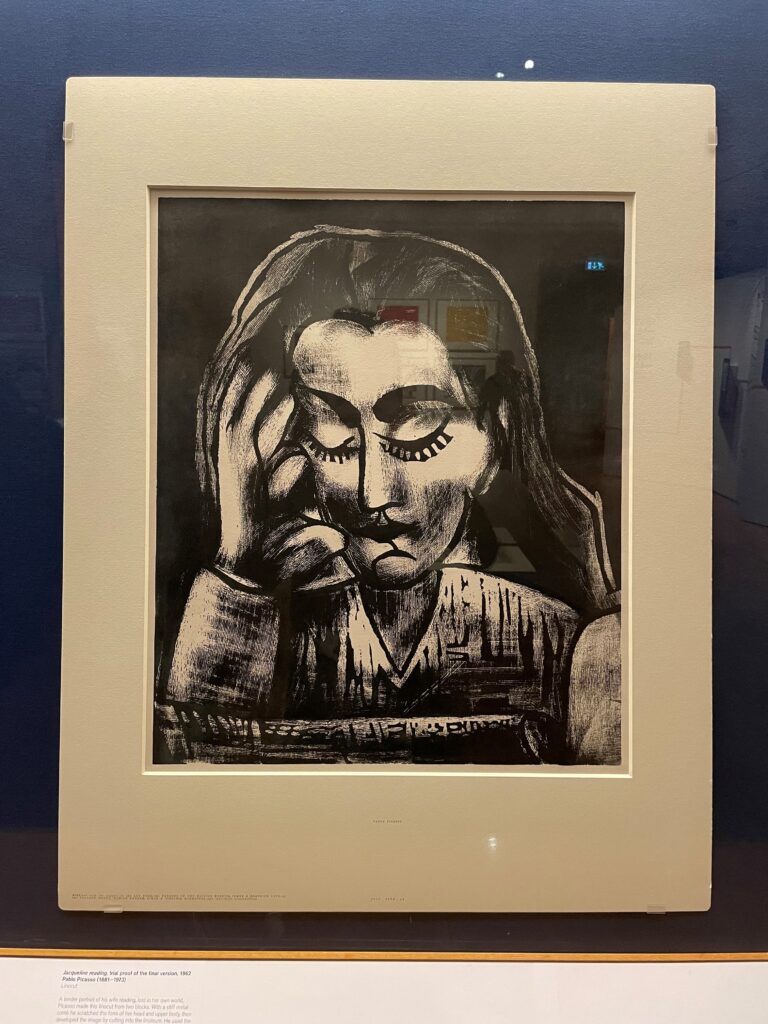Picasso: Printmaker at the British Museum
Written by Amelia Kedge, International Training Programme Assistant
I was recently surprised to learn that the British Museum is home to the UKs largest collection of Picasso’s prints. Pablo Picasso (1881–1973) was one of the world’s most influential artists, predominantly known for his paintings, but also a prolific printmaker. Throughout his lifetime he experimented with different printmaking techniques, making a total of over 2,400 prints.
In November Picasso: Printmaker opened at the British Museum, a temporary exhibition offering an insight into the artist’s life through his printed work.


The exhibition opens with a piece titled The frugal meal, 1904. The etching depicts a gaunt-looking man and a woman with a meagre piece of bread and bottle of wine between them, reflecting the poverty faced by many living in Paris at the time. As a young artist Picasso himself had little money, and recycled an etching plate to create this piece, seen by the tufts of grass still visible in the top left corner from the landscape image that existed before.

The exhibition continues in chronological order, exploring Picasso’s early works from 1904 – 1915. Much of the work created in this period is inspired by the world around him, depicting scenes of poverty and travelling circus performers. From 1907, Picasso began to develop a radical new style that came to be known as Cubism, which he practiced in both his prints and painted works.
The next section of the exhibition explores Picasso’s body of lithographs created between 1945 – 1954. Lithographs are made by applying an image to a stone or zinc plate using a greasy material such as a crayon. The surface is then dampened so that when an oil-based ink is applied, it sticks only to the drawn image. These portraits, composed of simple shapes, depict Françoise Gilot (1921 – 2023) who lived with Picasso in the South of France during this time.

Repetition and serial imagery became major characteristics of Picasso’s work during this period. This lithograph is one from a series of ten, depicting the biblical theme of David and Bathsheba, and tells the story of King David lustfully watching the beautiful Bathsheba, who is married to one of his soldiers, bathe below.

The exhibition then explores Picasso’s linocuts between 1955 – 1964. Linocuts are printed from a sheet of linoleum and requires the artist to cut away the negative space around an image, so the areas to be printed stand in relief. Some of these works include colour, like Still life under the lamp, 1962, which is made using four separate blocks and cutting and printing each colour in stages. The four states show the evolution of the image: starting with yellow, followed by red, then green and finally, black.



Picasso was still working up until his death in 1973. This final section of the exhibition documents these final years, and the 347 etchings, drypoints and aquatints that came to be known as the 347 Suite. As he became increasingly isolated due to ill health and old age, Picasso’s brothers Aldo and Piero set up a print studio close to his house which allowed him to continue his creative adventures. The prints in the 347 Suite depicts scenes of nature, the circus, the bullfight and the brothel.

Picasso: Printmaker is on at the British Museum until 30 March 2025.
